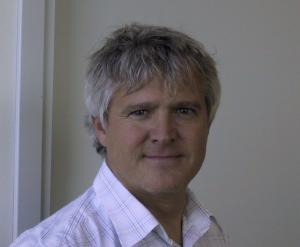
IMI Programme Office: What was the challenge that your project was trying to address?
Lutz Harnisch: To develop drugs for the benefit of patient treatment, you need to understand safety and efficacy; the side-effect profiles and the clinical outcome. In order to do that, you take many measurements in a given patient population and you integrate this information and try to make a statement about whether your understanding is good enough to say that the drug is safe and efficacious. To get to that point, you need to integrate many data points and to do that you usually use a mathematical model.
Those models can become rather complex, and when you build such a model you need to have a lot of knowledge, and have an understanding of the science behind. Usually it is not a single person who does the modelling exercise; it’s different colleagues from different parts of the organisation, and you need to help your colleagues, and others outside of your organisation, to understand what your model actually does and how to defend it. You need to talk to many parties, including regulators, and convince them that your model is good enough. To improve the efficiency of that process, we set out to develop a common framework and standards to facilitate that communications process.
IMI Programme Office: What would you say were the main achievements of your project?
Lutz Harnisch: Once you have a model and you have a given dataset, you want to store all that information, so we wanted to design a system that captures all the aspects of the modelling exercise. We created the DDMoRe repository, which is publicly available and contains more than 120 models created by people around the world so far.
Also, models are being executed in different software. Since different software programmes are very different, the model structures may be very different too. So we had to design some standards: standards to describe data inputs, outputs and everything which is related to the exercise of modelling. These standards are now publicly available for everyone to use.
Additionally, we developed a whole framework in which you could perform a modelling exercise: a very complex computer programme, in which you can re-run models. That’s important for the parties you need to convince that your model is a good one. For example, if a regulator wants to look at a model and wants to see whether your claim that your drug works well and doesn’t produce a lot of side effects is right, they might need to re-run your model. We created a framework in which anybody can re-run a model.
We also identified areas where models were badly needed and developed models in different therapeutic areas like oncology, diabetes, etc. Additionally, we developed new tools that help scientists build and evaluate models, and use them for specific purposes, such as optimising clinical trials.
IMI Programme Office: Which particular achievement are you most proud of as coordinators? Is there anything that stands out?

Mats Karlsson: At the moment, the DDMoRe repository has the most benefit for the community. It is the largest repository for clinical trial data models to date.
IMI Programme Office: Would you say that this repository is transformative for this field of research?
Lutz Harnisch: Yes. It brought many, many different colleagues together and made them agree on a way to handle models in a transparent, integrative way. That is what the repository now represents, because everyone can access it, as well as upload and download models as they see fit.
IMI Programme Office: What were the benefits of this project for the academic community?
Mats Karlsson: Within this project we wanted to improve drug development and the use of mathematical models within that. In order to understand some of the problems that exist, we needed to have good communications with those who are actually developing drugs. Thanks to DDMoRe and cooperation with the pharmaceutical industry, we were able to develop the methodology and models that are useful to drug development.
Additionally, many of our young scientists got training and access to a large network of colleagues in industry – by now many of them have actually moved to industry and are working there. The DDMoRe collaboration also brought several of our universities together; there has been a lot more exchange of staff and other collaborative efforts since then.
IMI Programme Office: And what about industry? How did they benefit from this project?
Lutz Harnisch: When it comes to industry, model-informed approaches are everywhere nowadays. We are using models in our day-to-day business to learn from the data we are generating. We also we use them in designing clinical trials and defending them in front of regulators. Models help us at all those points throughout the drug development path. So having had DDMoRe to create a framework, standards, and a repository for models, has already and will further enhance the way we implement model-informed drug development projects.
IMI Programme Office: Is this already speeding up the drug development process?
Lutz Harnisch: Yes, it is speeding up the process probably, but also making the process more credible, because transparency leads to much better collaboration and exchange between various stakeholders.
IMI Programme Office: What about SMEs in the project? How did they benefit?
Lutz Harnisch: SMEs usually have a confined customer base and it is in their interest to widen that customer base to sell the tools and systems they develop. Through DDMoRe, they suddenly had almost the entire European pharmaceutical industry in front of them, at their ear. They listened to their needs and many of them changed their business model as a result, because they could streamline their activities towards what the customers actually told them.
Mats Karlsson: Some SMEs benefitted by actually being formed during the course of the project, or as a direct consequence of it. We had three such spin-offs.
IMI Programme Office: Would any of this have been possible without IMI and public-private collaboration?
Lutz Harnisch: Not really. We made some attempts before IMI existed to come together as a collaboration between industry partners but it was very, very difficult. With IMI creating this framework for collaboration, it became suddenly relatively easy to bring a consortium of nearly 25-30 parties together and work collaboratively for 5 years. That is rather unique.
Mats Karlsson: The same goes for universities, just to set up collaborative agreements between seven different universities would have been a massive undertaking. IMI provides a framework for collaboration between industry and universities that is much easier to handle than typical university-industry collaborations.
IMI Programme Office: Now that the project ended, what happens with the repository and the other tools you created? Is there a sustainability plan in place?
Mats Karlsson: Before DDMoRe project finished, we started a foundation. Now that the project stopped, the foundation is the caretaker of the project outcomes. We’re also engaging at conferences and have community groups that are interested in the different project outputs and that are also looking after them.
IMI Programme Office: If you were to give a tip to coordinators of future IMI projects, based on what you learned what would those tips be?
Mats Karlsson: It is important to build flexibility in the project from the start and make all the partners aware that things will probably need to be adjusted over the course of the project.
Lutz Harnisch: It is important to achieve a common understanding of what you want to do very early on. We were 27 partners, they were coming from rather different backgrounds, and having a common understanding, reaching consensus is not always easy.
IMI Programme Office: Anything else to add?
Lutz Harnisch: It was a great undertaking, a great collaboration. We had a chance to have so many interactions with so many people from a similar domain and greatly fruitful interactions with parties outside of pharmacologic modelling domain. That helped us understand what we want to do and how to better achieve it.
Mats Karlsson: Even though the project ended, we still have many ongoing collaborations that would have never happened without DDMoRe.
